What Is Dermaplaning Treatment?
One of the most revolutionary treatments brought to us by modern cosmetology is the invention of dermaplaning. For over 40 years, this procedure has been performed by cosmetologists and plastic surgeons to improve the health and beauty of the skin.
The dermaplaning facial treatment consists of the use of an exfoliating blade to refine the outermost layers of the skin. A sharp scalpel removes dead cells and hair, allowing the skin to develop a healthier, youthful, and beautiful look.
It is considered a non-invasive cosmetic procedure that can also be used to prepare the skin for other treatments.
Benefits Of Dermaplaning
When going through this procedure, results can vary from person to person. The quality of the work done also depends on the expertise of the provider. Anyhow, we can expect to see improvements in the skin such as a smoother, brighter, and younger look.
This treatment will also allow the skin to better absorb skincare products. As dead cells get removed from the surface of the face, products can penetrate it more effectively. Another plus on dermaplaning is that it requires little or no recovery time. This means a person who went under this procedure can resume their usual activities right away.
This gentle procedure is proven to be less aggressive than other cosmetic treatments used to exfoliate, and remove hair from skin.
How Long Does Dermaplaning Results Last?
As you might have guessed, the effects of the dermaplaning facial treatment are not permanent. In about three weeks to a month, all the aesthetic results achieved by this treatment will fade away. Either way, any skincare products used during this period will certainly have had an enhanced effect. Dermaplaning is a great decision to take further and proper care of the skin.
How Much Is Dermaplaning In The US?
Depending on where you are in the United States and which provider you chose, the cost of dermaplaning can vary widely. You might be getting it for as low as $75, but in some cases, the cost of the treatment can reach $300 at more exclusive establishments.
Although some people might try to do this procedure by themselves, it is recommended to entrust this practice to a professional provider. You might save some money by doing this yourself at home, but if you want a safe and effective treatment, it is better to go with an expert.
Does Dermaplaning Help With Acne?
Will the dermaplaning facial treatment help with acne? The short answer is yes, it will. The long answer is a little more complex. By removing the dead cells from the surface of the skin, the pores will unclog, preventing the appearance of acne. It will also allow anti-acne, and other skincare products to be absorbed by the skin, and work more effectively post-treatment. On the other hand, dermaplaning is not recommended for people with active pustules and cysts. It might damage and cut open affected areas.
Also, this is where the quality of the treatment provided plays a big role. If dermaplaning is not done correctly it might cause more harm than it helps. The use of heavy oils and the wrong blades might cause acne outbreaks, inflammation, and more damage than good to the skin.
If done correctly, dermaplaning will not only reduce acne and bacteria present in the skin; it will also lighten up the scarring left by previous acne breakouts.
Dermaplaning Contraindications
As mentioned before, dermaplaning should not be done on skin with active acne pustules or cysts. This limitation can also extend to other skin conditions such as cold sores, moles, warts, and open skin lesions.
The treatment provider should also be aware of other conditions. Common contraindications include skin cancer, uncontrolled diabetes, dermatitis, hemophilia, eczema, psoriasis, seborrhea, keratoses, etc. Allergy to nickel is another contraindication.
If you decide to go under this procedure you should have a conversation with an expert or general physician and give them as much information as possible. Some medications like Retinol and Accutane might also be contraindicated. Undergoing cancer treatment such as chemotherapy or radiation may count you out of this treatment as well.
Does Dermaplaning Hurt?
If you are afraid of having a dermaplaning treatment because you don’t want it to hurt, we have good news for you. Dermaplaning is just like shaving, it does not hurt if the person who does it on you knows what they are doing.
It’s a pretty normal reaction to see a blade and feel a little scared or unsure, but this procedure is simple and done on the superficial layer of the skin. You will feel it just like you feel a razor when shaving any other part of your body. So pain isn’t something to worry about.
Is Dermaplaning Safe?
Dermaplaning is a safe procedure. When done by an expert there is virtually nothing to be concerned about. There is a risk of getting small cuts, but they are minimal and less threatening than any usual cut made while shaving. This is because a sharp blade is being used on the skin. Just remember the person doing this will know what they are doing.
Surely, they are being much more careful than any of us when shaving our legs, or other parts of our bodies.
Also, keep in mind that if you are going under this procedure you must be extra careful with sunlight. You don’t want to end up having changes in the pigmentation of your face. You will need to apply moisturizer and sunscreen on your face after the dermaplaning is done. You might want to avoid extreme heat as well.
As long as all the safety measures are taken, and all the steps are properly followed; the treatment will be successful and without complications of any sort.
How Often To Dermaplane?
As mentioned before, all the effects of dermaplaning will fade away within three to four weeks. So it is safe to say that it can be done every four to six weeks to get the most out of it. An expert will help figure out the best treatment plan for each person.
Every time a person has this treatment done, they are having about two to three weeks’ worth of dead cells removed from their skin. Having a dermaplaning treatment every month or so will help prevent those dead cells from accumulating.
Dermaplaning After Effects
As a low-risk procedure, dermaplaning has few side effects. Most of these unwanted effects occur when something is not being done properly.
If a person doesn’t pay attention to the experts, they can make mistakes like getting this treatment too often and/or too soon after having the previous one. This might cause the skin to peel and become sensitive. It’s important to remember that this process exposes deeper layers of the skin, so it must be done as instructed by a professional.
Redness and tender skin are possible if there is no after-treatment. The best estheticians will indicate how to take care of your face after dermaplaning. Vitamin C and E serums, collagen, sunscreen and moisturizers are usually recommended.
A very important note to take is to be careful of the sun and certain harsh skincare products that might irritate the skin.
Avoiding direct sunlight and extreme heat for three days after having the procedure will allow the skin to fully recover in most cases.
Professional Dermaplaning Tools
Types of Dermaplane Tools
There are different types of dermaplaning tools used by experts to perform the procedure. A professional esthetician will use various types of dermaplaning blades, but there are other tools you can find on the web to do it at home. These home tools include razor blades and electric devices that emulate the work done by a licensed provider. For the best results, it is always safer to go to those who truly know what they are doing.
Among the blades used by real dermaplaning estheticians are the 10S, the No. 10 Scalpel, and the No. 14 Scalpel.
The 10S blades are made of surgical stainless steel and most experts consider them to be ideal for the dermaplaning procedure. The No. 10 Scalpel blades, on the other hand, are
less used due to their curved edges, which make them difficult on angular areas of the face. Finally the No. 14 Scalpel blades are long and have shapes that resemble a butter knife.
A good dermaplaning provider will also use light weight combinations of oils that will make the treatment much easier. These oils will also infuse nutrients into the skin.
How To Use A Dermaplaning Razor?
To use a dermaplaning razor, you must wash your face carefully. Once clean, dry your face very well; the drier, the better. Now you can proceed to grab your razor blade and begin the dermaplaning process.
The razor must be at a 45-degree angle against the skin. Move the razor downwards with short strokes and very little pressure. Make sure to cover the cheeks, jawline, forehead, and chin. Avoid the eyelids, the sides of the nose, and the hairlines.
Once the “shaving” part is done, you must use moisturizer to hydrate the skin on your face. You will also need to apply sunscreen throughout the day.
A sunscreen with a sun protection factor (SPF) of 30 will block up to 97% of the ultraviolet beams (UVB). Using SPF 100 sunscreen will block up to 99% of UVB, so there’s not much difference between this one and SPF 30.
If you are going to do this at home, you must use light oils that penetrate into the skin reducing the risk of cuts, inflammation, and undesired pigmentation.
Dermaplaning Vs Microdermabrasion
Microdermabrasion is another cosmetic procedure. This one involves rubbing fine crystals onto the skin to exfoliate the surface. Then, a minimally abrasive instrument is used to remove the outer layer of skin. Just as dermaplaning, it removes dead cells and bacteria in the process, and gives a rejuvenated look.
Dermaplaning is a simple procedure that only involves using a scalpel blade to gently “shave” off hair and dead cells from the skin. Meanwhile, microdermabrasion involves “sucking” impurities from the skin using a small electric device. While both methods are effective in making skin look better, microdermabrasion might cause inflammation, as it is a little bit more aggressive than dermaplaning.
Besides the pressure and abrasion that might come with microdermabrasion, it also doesn’t remove the hair that covers the skin. Dermaplaning is a more gentle method of exfoliation that will also remove this thin, vellus hair.
On the bright side, both dermaplaning and microdermabrasion are considered to be less aggressive than dermabrasion. Although the latest is capable of significantly erasing more wrinkles and scars in comparison with the other two.
Dermaplaning Vs Shaving
Although dermaplaning is often referred to as “shaving your face” it is quite different. Unlike traditional shaving, dermaplaning involves a smaller blade, and it is a more gentle procedure.
Dermaplaning also comes with many benefits beyond just removing hair. Shaving razors do not offer the same dead skin cells removal efficiency as dermaplaning does. Shaving can also irritate skin and accidentally hurt it more easily.
Dermaplaning is also done by a professional esthetician. They will be more precise, get better angles and reach more difficult areas of the face.
Dermaplaning Vs Waxing
Waxing is a very good way of removing unwanted hair leaving skin smooth for a long period of time. It also removes some of the dead cells from the skin. While this sounds very good, waxing can be painful, leave scarring, and inflammation.
The main difference between dermaplaning and waxing is the goal you want to achieve. If you wish to remove hair, then waxing is a great option. If you not only want to remove hair but also improve the health and look of your skin, then dermaplaning is the best choice.
Dermaplaning Side Effects
What Happens When You Stop Dermaplaning?
Once you stop dermaplaning your hair will start to grow back and skin will return to its original state. There won’t be any side effects if you decide to stop dermaplaning, you don’t have to commit to it. As mentioned above, about three to four weeks after dermaplaning, all the visible effects will be gone, and the skin will return to its original appearance.
Dermaplaning Hair Regrowth
Once you stop dermaplaning and your hair grows back, it will be the same color and thickness as it used to be. Dermaplaning does not affect the growth cycle of hair. It does not stimulate hair growth, your face will just go back to what it was before dermaplaning.
Your peach fuzz (vellus hair) will not grow back darker and thicker, that’s just a myth! Not even shaving will affect the way your hair grows back. This was scientifically proven almost a century ago.
Factors that can actually affect the growth cycle of your hair are genetics, age, nutrition, stress, hormones, and climate changes.
Dermaplaning Stubble
Luckily, dermaplaning will not cause any kind of stubble. We don’t need to worry about having a beard shadow. Dermaplaning has nothing to do with the way hair grows back.
You might feel like the hair is growing back darker than it used to be, but this is only because your skin is brighter after dermaplaning.
Is Dermaplaning Worth It?
The Pros And Cons
So to wrap this all up, is dermaplaning actually worth it? What are the pros and cons of dermaplaning?
Let’s start with the cons of dermaplaning:
● The main downside of dermaplaning is how much it costs. Compared to other methods like shaving or waxing, dermaplaning is quite expensive if put in perspective.
● There is also a significant difference if you do it at home by yourself, and if you go with a professional esthetician.
● If done improperly, dermaplaning can irritate the skin, cause cuts, and leave scarring. And no matter if done properly or by an expert, results are not permanent and won’t even last much.
● Another downside of dermaplaning is that it is not for everybody. As mentioned in the “Dermaplaning Contraindications” section; there are certain conditions that will sort some people out of being ideal candidates for this treatment.
Finally, here are the pros of dermaplaning:
● Dermaplaning removes the excess of hair on the face, which allows skin to get a smooth, bright, and young look.
● It removes dead cells and bacteria from the skin. This helps prevent the occurrence of acne, and evens skin tone.
● Dermaplaning can also reduce the marks and scarring done by previous acne outbreaks. It can also reduce the appearance of wrinkles.
● The effects of dermaplaning are visible immediately, and people who go under this procedure need little or no recovery time. So they can resume their normal activities right away.
● It is completely painless.
● It can be used as preparation for other aesthetic procedures.
● Dermaplaning is less aggressive than other treatments such as waxing, shaving, and microdermabrasion.
● It does not thicken the hair when it grows back, nor it leaves stubble.
● It allows the better absorption and effectiveness of skincare products.
● Dermaplaning makes your makeup look better.
So, is dermaplaning worth it or not? If you can pay for it, and do it with responsible and experienced estheticians, this might be the best choice you can make. Dermaplaning is a harmless, quick, painless, and effective treatment that will allow your skin to look amazing. There are other options you can take that will give you similar results. It depends on you, and what you feel comfortable with.


































